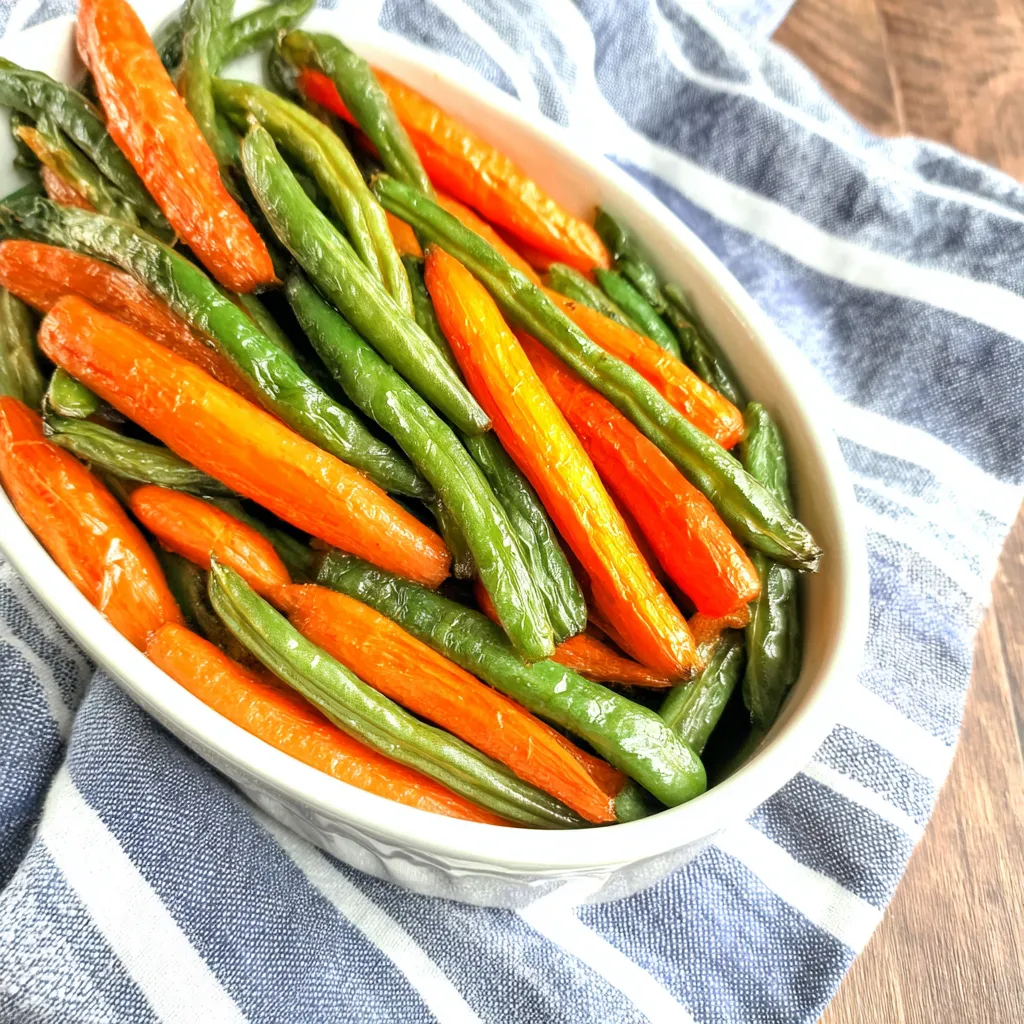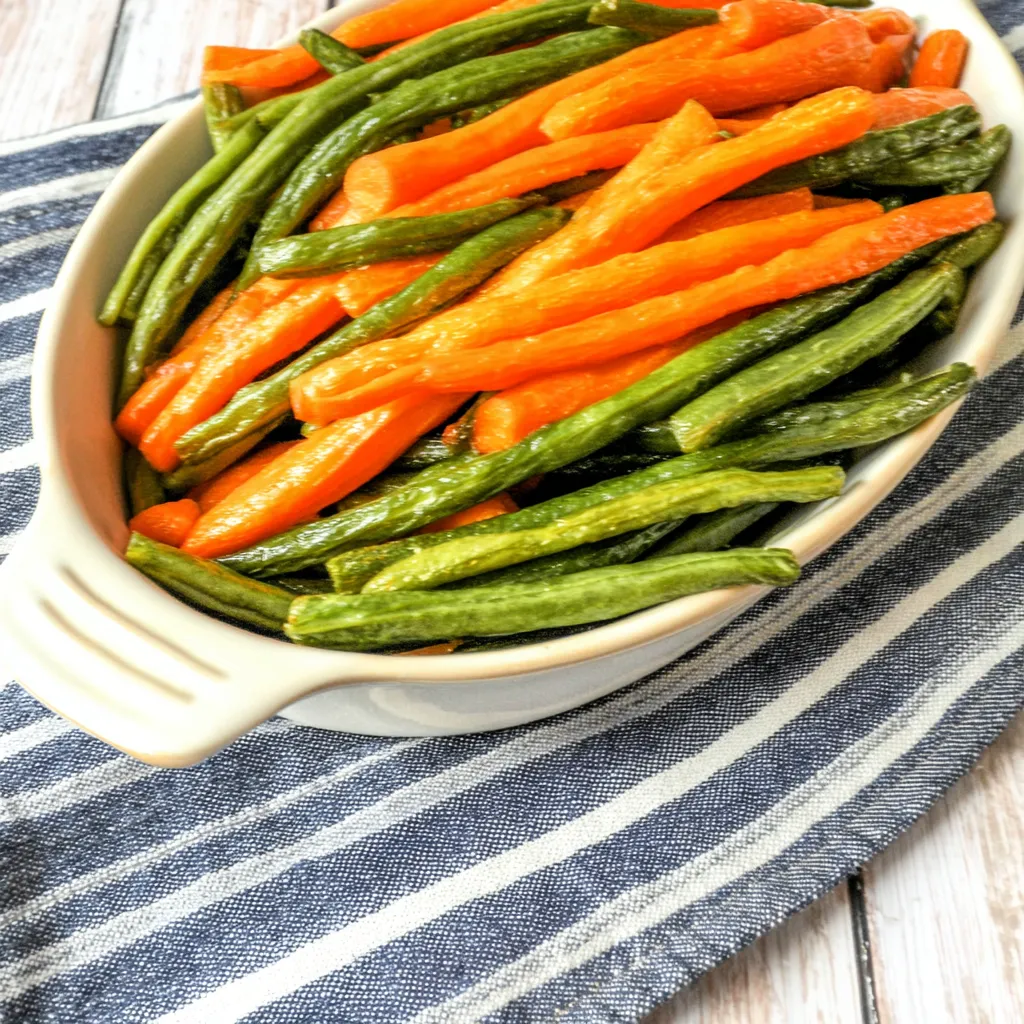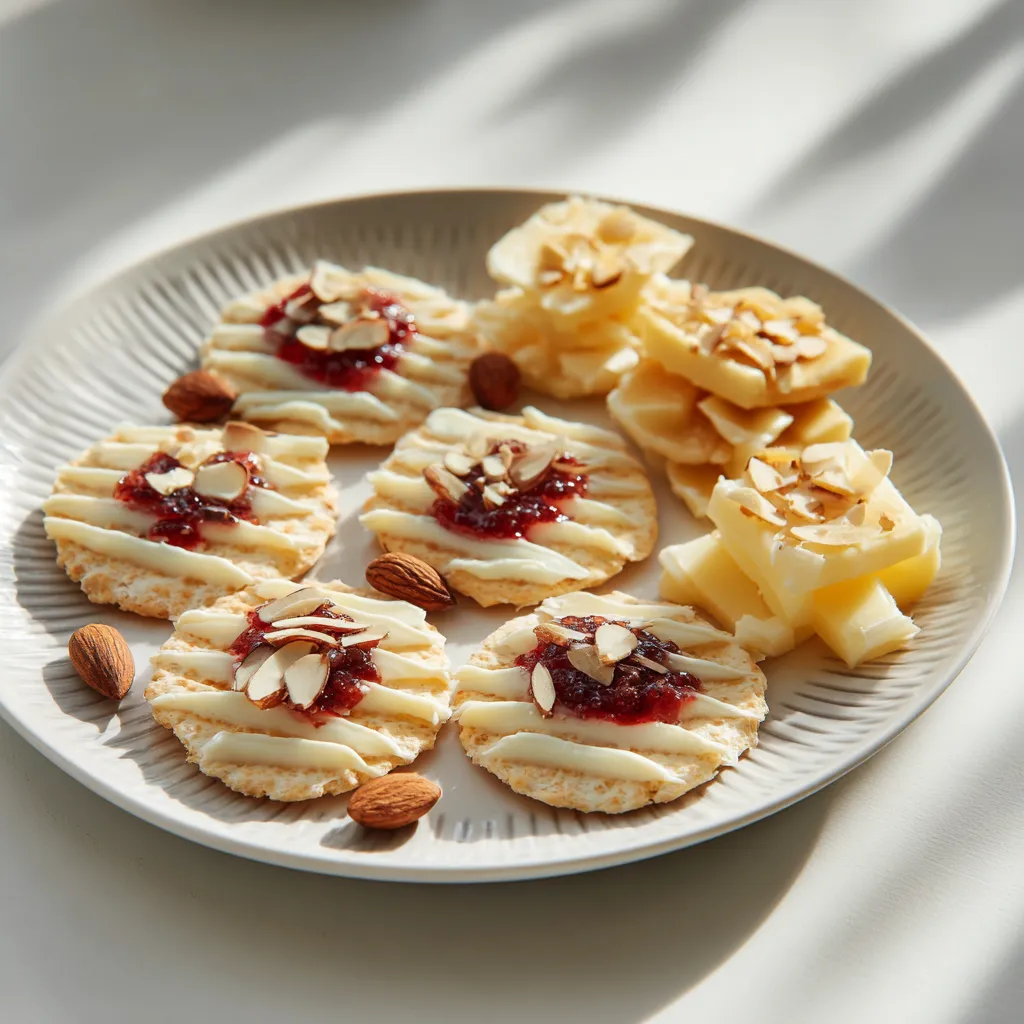Honey glazed vegetables: is it just a simple coating, or is there a hidden art to achieving that perfect balance of sweet, savory, and beautifully caramelized goodness? Let’s dive into the delicious science and secrets behind creating truly exceptional honey glazed vegetables.
The Sweet Science of Glazing: Beyond Just Honey

The magic of honey glazed vegetables lies in a confluence of factors, far beyond simply drizzling honey on cooked veggies. It’s about understanding how sugars caramelize, how heat affects different vegetables, and how to create a glaze that clings beautifully and enhances the natural flavors. The Maillard reaction, that delightful chemical reaction between amino acids and reducing sugars, is crucial. This is what gives us that desirable browning and complex flavor development. Honey, with its unique sugar profile (primarily fructose and glucose), lends itself perfectly to this process. Fructose caramelizes at a lower temperature than glucose, making honey a more efficient browning agent than, say, granulated sugar. Furthermore, the water content in honey needs to evaporate for proper caramelization to occur, meaning the application technique and temperature control are paramount. Think of it like Umami Miso Mushroom Magic, where the miso adds another layer of savory complexity. The same principle applies here; a touch of salt, soy sauce, or balsamic vinegar can elevate the honey glaze to new heights.
The Recipe: Honey Glazed Vegetable Perfection
Here’s a detailed recipe, born from many trials and (delicious) errors, that you can adapt to your favorite vegetables.
Ingredients:
- 1 pound of your favorite vegetables (broccoli florets, carrot sticks, bell pepper strips, Brussels sprouts halved, green beans trimmed, etc.)
- 2 tablespoons olive oil or avocado oil
- 2 cloves garlic, minced
- 1/4 cup honey (raw honey is preferred for flavor and health benefits)
- 2 tablespoons soy sauce (low sodium) or tamari (for gluten-free)
- 1 tablespoon rice vinegar or apple cider vinegar
- 1 teaspoon sesame oil (optional, for added flavor)
- 1/4 teaspoon red pepper flakes (optional, for a touch of heat)
- Salt and freshly ground black pepper to taste
- Sesame seeds and chopped green onions, for garnish (optional)
Instructions:
- Prepare the Vegetables: Wash and chop your chosen vegetables into bite-sized pieces. Ensure they are relatively uniform in size for even cooking.
- Preheat and Toss: Preheat your oven to 400°F (200°C). In a large bowl, toss the vegetables with olive oil, salt, and pepper.
- Roast (Partially): Spread the vegetables in a single layer on a baking sheet lined with parchment paper. Roast for 15-20 minutes, or until they are almost tender-crisp. This pre-roasting step is crucial, ensuring the vegetables are cooked through before the glaze is applied.
- Prepare the Honey Glaze: While the vegetables are roasting, prepare the honey glaze. In a small saucepan, combine honey, soy sauce, rice vinegar, sesame oil (if using), red pepper flakes (if using), and minced garlic.
- Simmer and Thicken: Bring the glaze to a simmer over medium heat, stirring constantly. Cook for 3-5 minutes, or until the glaze has thickened slightly and coats the back of a spoon. Be careful not to burn the garlic.
- Glaze and Roast: Remove the vegetables from the oven. Pour the honey glaze over the vegetables and toss to coat evenly. Return the vegetables to the oven and roast for another 5-10 minutes, or until the glaze is caramelized and the vegetables are tender. Watch carefully to prevent burning.
- Serve: Remove the honey glazed vegetables from the oven and let them cool slightly. Garnish with sesame seeds and chopped green onions, if desired. Serve immediately.
The Investigation: My Honey Glazed Vegetable Odyssey
My quest for the perfect honey glazed vegetables was not a straight path. My first few attempts were a disaster, resulting in either soggy, undercooked vegetables swimming in a watery glaze, or charred, bitter offerings that were barely edible. Like many of you, I initially thought it was as simple as tossing raw vegetables in a honey mixture and throwing them in the oven. I was so wrong!
The Soggy Saga: The Importance of Pre-Roasting
The first major hurdle was the moisture content. Raw vegetables release a significant amount of water during cooking, diluting the honey glaze and preventing proper caramelization. I tried various solutions, including increasing the oven temperature and reducing the cooking time. However, these only resulted in unevenly cooked vegetables. Then, I had an “Aha!” moment: pre-roasting. By partially roasting the vegetables *before* adding the glaze, I allowed much of the excess moisture to evaporate, creating the ideal environment for the glaze to adhere and caramelize beautifully. This is a trick I also use when making Oven Zucchini Slices, ensuring they don’t become mushy.
The Bitter Truth: Taming the Garlic
Another challenge was the garlic. Initially, I added the minced garlic directly to the vegetables before roasting. The result was often a burnt, bitter flavor that overwhelmed the delicate sweetness of the honey. The solution? Simmering the garlic in the honey glaze beforehand. This not only mellowed the garlic’s harshness but also infused the glaze with its subtle aroma. It’s a similar principle to blooming spices in oil to release their full potential.
The Glaze Game: Finding the Right Balance
Finally, the glaze itself needed refinement. Early iterations were either too sweet, too sticky, or too thin. The key was finding the right balance of sweet, savory, and acidic elements. The addition of soy sauce provided a savory depth, while rice vinegar added a bright, tangy counterpoint. A touch of sesame oil elevated the complexity, and a pinch of red pepper flakes provided a subtle kick. This is the kind of balance I look for when creating a Velvet Vegetable Dream Soup.
The Technique: The Foolproof Honey Glazed Vegetable Method
Based on my experiments, here’s a step-by-step method for consistently achieving honey glazed vegetable perfection:
- Choose Your Veggies Wisely: Select vegetables that roast well and have a relatively similar cooking time. Broccoli, carrots, bell peppers, and Brussels sprouts are excellent choices.
- Pre-Roast for Moisture Control: Toss the vegetables with olive oil, salt, and pepper, and roast them at 400°F (200°C) for 15-20 minutes, or until they are almost tender-crisp. This crucial step removes excess moisture.
- Craft the Perfect Glaze: Combine honey, soy sauce, rice vinegar, sesame oil (optional), red pepper flakes (optional), and minced garlic in a saucepan. Simmer over medium heat for 3-5 minutes, until slightly thickened.
- Glaze and Finish: Remove the pre-roasted vegetables from the oven and toss them with the honey glaze. Return them to the oven and roast for another 5-10 minutes, or until the glaze is caramelized and the vegetables are tender. Watch carefully to prevent burning.
- Garnish and Serve: Remove the honey glazed vegetables from the oven and let them cool slightly. Garnish with sesame seeds and chopped green onions, if desired. Serve immediately for the best flavor and texture. Consider serving these alongside Honey Garlic Sausage Roasted Sweet Potatoes for a full meal! Or, if you’re in the mood for something quicker, these would pair nicely with Sweet Potato Hash Browns. You could even adapt this glaze to make something similar to Roasted Sweet Potato Bites.
Why is pre-roasting the vegetables important before adding the honey glaze?
Pre-roasting removes excess moisture from the vegetables. This prevents the glaze from becoming watery and allows it to caramelize properly, resulting in a better flavor and texture.
What is the purpose of adding soy sauce and rice vinegar to the honey glaze?
Soy sauce adds a savory depth to the glaze, while rice vinegar provides a bright, tangy counterpoint to the sweetness of the honey, creating a balanced flavor profile.
Why does the recipe instruct to simmer the garlic in the glaze instead of adding it directly to the vegetables before roasting?
Simmering the garlic in the honey glaze mellows its harshness and infuses the glaze with its flavor. Adding garlic directly to the vegetables before roasting can result in a burnt, bitter taste.
What vegetables are best suited for this recipe?
Vegetables that roast well and have a similar cooking time are ideal. The article suggests broccoli, carrots, bell peppers, and Brussels sprouts as excellent choices.

Honey Glazed Vegetables
Ingredients
Equipment
Method
- Preheat oven to 400°F (200°C).
- Wash and chop vegetables into bite-sized pieces, ensuring they are relatively uniform in size.
- In a large bowl, toss the vegetables with olive oil, salt, and pepper.
- Spread the vegetables in a single layer on a baking sheet lined with parchment paper.
- Roast for 15-20 minutes, or until they are almost tender-crisp.
- While the vegetables are roasting, prepare the honey glaze. In a small saucepan, combine honey, soy sauce, rice vinegar, sesame oil (if using), red pepper flakes (if using), and minced garlic.
- Bring the glaze to a simmer over medium heat, stirring constantly. Cook for 3-5 minutes, or until the glaze has thickened slightly and coats the back of a spoon. Be careful not to burn the garlic.
- Remove the vegetables from the oven.
- Pour the honey glaze over the vegetables and toss to coat evenly.
- Return the vegetables to the oven and roast for another 5-10 minutes, or until the glaze is caramelized and the vegetables are tender. Watch carefully to prevent burning.
- Remove the honey glazed vegetables from the oven and let them cool slightly.
- Garnish with sesame seeds and chopped green onions, if desired.
- Serve immediately.




